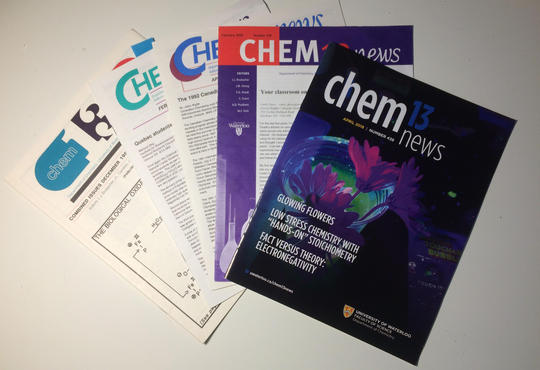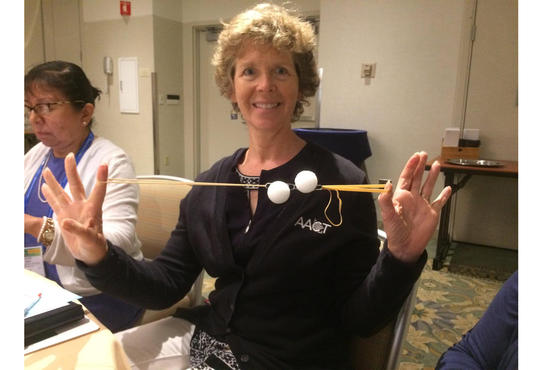Celebrating the 90s - 50th Celebration of Chem 13 News
January 1998
I do the "egg experiment" in the third week of school; it follows activities involving the operation of the balance, the precision of volumetric equipment, methods for the determination of volume and the uncertainty of measurement. The experiment is to collect enough data to verify or refute the statement that "the density of a whole chicken egg is equal to the arithmetic mean of its parts — the yolk, the white, and the shell". All measurements must be done directly on a single egg within a fifty-minute laboratory period.
The two-student experimental teams must design a joint plan to gather the data and create a materials/equipment list. During that time, I play the role of safety monitor, supply room attendant and cheerleader. I answer several questions: "Can we hard boil the egg?" or "Do you have an egg separator?" The two criteria — all measurements must be done on a single egg and any request for another egg is granted at the cost of 10% grade deduction per egg — heighten their careful work. It also cuts down tremendously on the number of eggs needed!
The students anxiously choose their egg, zero the balance meticulously, bend to see the meniscus without parallax, and deftly crack shells and separate yolks. Some teams travel smoothly through their procedures and finish in thirty minutes. Others run into problems with broken yolks, spilled white, or an undercooked mess. By bell time some teams leave confident in their results; others, with some concern; a few, downright frustrated.
The next day we share the procedural successes and failures as a supportive scientific community. Many students believe in the statement's validity. When their data prove it false, they have difficulty identifying the origin of the falsehood. A decent set of data should give the density of the egg as 1.06 ± 0.02 g/mL and the average of the densities of the three parts at 1.17 ± 0.03 g/mL, a deviation of 10%. It is difficult for the students to decide if that difference is substantial enough to conclude FALSE, especially if they entered the experiment believing TRUE.
This experiment lets me set the tone of my classroom laboratory for the remainder of the year. The organization of procedural steps, the difficult choices in concluding results from data, and the uncertainty in even the most careful work are hurdles for all scientists. I want my students to operate as scientists for the fifty minutes we spend together five days each week. As scientists, their highest priority is to achieve a better understanding of the real world modified by the understanding that an experiment can produce only an estimate of the true state of nature. As they reduce the uncertainty in that estimate, they taste the sweet satisfaction of scientific progress.
I also want them to feel possessed by a positive collaborative spirit and to feel free to discuss concerns and suggestions with one another. The final beauty of the experiment is that it sets the science department budget back by only 89 cents per dozen.







